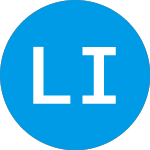 georgie18
4 weeks ago
georgie18
4 weeks ago
LYEL...7008...Off the .56 Alert...🥳
georgie18
Member Level
Re: georgie18 post# 32376
Friday, February 21, 2025 9:40:49 AM
Post#
32428
of 32525
LYEL...6868...🥳...Trying for Double Top Breakout here...Off the .56 Alert...
georgie18
Member Level
Re: georgie18 post# 674836
Thursday, February 20, 2025 2:04:23 PM
Post#
674950
of 675048
LYEL...66...HOD...🥳
georgie18
Member Level
Re: georgie18 post# 32041
Wednesday, February 19, 2025 3:48:52 PM
Post#
32270
of 32375
LYEL...6145...Bullish Engulfing Reversal Candle...🥳
LYEL...639...🥳...Looking for $1 plus here...
georgie18
Member Level
Re: None
Thursday, February 13, 2025 4:20:43 PM
Post#
32007
of 32040
LYEL...56...🥳... https://schrts.co/XneECpDw...https://finance.yahoo.com/news/lyell-immunopharma-lyel-upgraded-strong-170012527.html
This is a Rigatoni Play ...one of the best Traders I have had the pleasure of knowing for many years...
 georgie18
1 month ago
georgie18
1 month ago
LYEL...6868...🥳...Trying for Double Top Breakout here...Off the .56 Alert...
georgie18
Member Level
Re: georgie18 post# 674836
Thursday, February 20, 2025 2:04:23 PM
Post#
674950
of 675048
LYEL...66...HOD...🥳
georgie18
Member Level
Re: georgie18 post# 32041
Wednesday, February 19, 2025 3:48:52 PM
Post#
32270
of 32375
LYEL...6145...Bullish Engulfing Reversal Candle...🥳
LYEL...639...🥳...Looking for $1 plus here...
georgie18
Member Level
Re: None
Thursday, February 13, 2025 4:20:43 PM
Post#
32007
of 32040
LYEL...56...🥳... https://schrts.co/XneECpDw...https://finance.yahoo.com/news/lyell-immunopharma-lyel-upgraded-strong-170012527.html
This is a Rigatoni Play ...one of the best Traders I have had the pleasure of knowing for many years...
 jondoeuk
2 months ago
jondoeuk
2 months ago
There are other bi-specific CARs, including two by GILD's Kite, and at least one tri-specific in development as well.
CRGX's CRG-023 (IND cleared, PhI mid-year) is the first tri-specific CAR-T to express three independent CARs from a single vector, with each CAR having a distinct co-stim domain. One co-stim domain incorporates CD2 signaling, which has been designed to overcome immune-evasion mediated by the loss of CD58 https://ashpublications.org/blood/article/136/Supplement%201/53/470303/CD58-Aberrations-Limit-Durable-Responses-to-CD19
Novel CD19 and CD20 scFvs were selected for enhanced CAR performance and combined with the existing CD22 scFv used in firi-cel. These new binders are fully human to limit host-mediated rejection. The iterative engineering allowed for the selection of the optimal costimulatory domain configuration and optimal assemblage in the lentiviral vector used https://www.sciencedirect.com/science/article/pii/S0006497124047827
 jondoeuk
2 months ago
jondoeuk
2 months ago
What they don't say is equally as important as what they do say.
Prizlon-cel, is a novel CD19/CD20 bispecific CAR-T. Of the 48 patients infused, 44 had LBCL. No patient experienced a DLT. CRS occurred in 93.8% of patients, with only one case of grade 3. ICANS occurred in 6.3% of patients, with no grade 3 or higher events. The ORR and complete response (CR) rates in all patients were 91.5% and 85.1%, respectively, and in LBCL patients, ORR was 90.7% with 86.0% CR. With median follow up of 30.0 months, median DOR, PFS, and OS were all not reached. The Kaplan-Meier estimate of 2-year DOR, PFS and OS rates were 66.0%, 62.6%, and 76.5%, respectively. https://ashpublications.org/blood/article/doi/10.1182/blood.2024026401/535112/A-phase-1-trial-of-prizloncabtagene-autoleucel-a
The company behind it has signed deals with both AstraZeneca and Janssen. The latter includes this CAR (and another targeting just CD20), which has been granted Regenerative Medicine Advanced Therapy and Fast Track designations by the FDA for the treatment of patients with R/R DLBCL. Now a PhI/II trial is ongoing https://clinicaltrials.gov/study/NCT05800977
 NY1972
3 years ago
NY1972
3 years ago
recent technical advances using culture conditions with IL-7/IL-15 and
the addition of IL-21 may enhance the enrichment for TSCM cells
in the final CART product (74–76), which can be further increased
with the addition of drugs blocking T-cell differentiation, such as
glycogen synthase-3 inhibitors (77). Nevertheless, robust clinical grade protocols for generating TSCM-enriched CART products
have not been developed so far. Recently, a few CART19 clinical
trials for DLBCL have been conducted in which CART products
were manufactured from CD62L+ isolated T cells to generate
cellular products enriched for TCM cells (21, 78); however, due to
prolonged culture conditions, enrichment for TSCM and TCM
subsets in the infused product could not be demonstrated
https://www.frontiersin.org/articles/10.3389/fimmu.2022.904497/full
 NY1972
3 years ago
NY1972
3 years ago
Thanks for the link.
Most commonly reported grade 3/4 AEs were neutrophil count decrease (6/9, 67%), anemia (5/9, 56%), thrombocytopenia (2/9,22%), platelet count decrease (2/9, 22%) and no infection was reported. Complete response rate(CRR) was 78%
Compared to T-Charge
http://www.koreabiomed.com/news/articleView.html?idxno=12767
 jondoeuk
3 years ago
jondoeuk
3 years ago
That depends. Typically, the more the cells expand during manufacturing, the more they differentiate. In the case of ALLO, it seems most are effector memory (manufacturing time is ~19 days and there are a number of steps involved). LYEL refer to this as the expansion/quality paradox. With Epi-R, they have shown they can expand TCR-T cells up to 18 billion by day ten. In addition, these cells are over 94% viable and maintain their ''stem-like'' qualities.


 NY1972
3 years ago
NY1972
3 years ago
 NY1972
3 years ago
NY1972
3 years ago
 NY1972
3 years ago
NY1972
3 years ago
 NY1972
3 years ago
NY1972
3 years ago
